Archaeologists have unearthed everything from pottery workshops to cannonballs to a tavern so rife with artifacts frozen in time that experts are calling it "Boston's very own Pompeii."
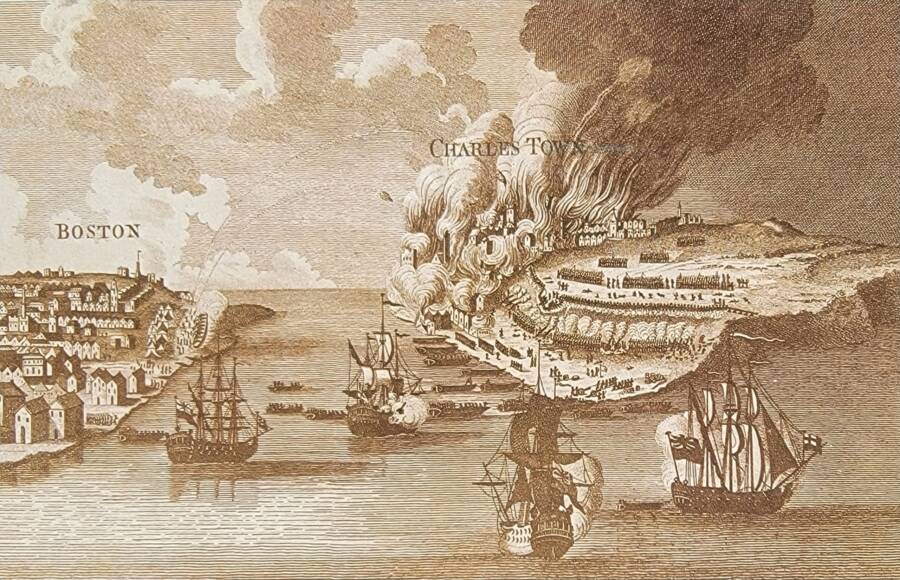
Wikimedia CommonsDuring the Battle of Bunker Hill in June 1775, British troops began firing heated cannonballs at Charlestown, setting the entire area ablaze.
To commemorate the 250th anniversary of the Battle of Bunker Hill, archaeologists in Boston have undertaken several projects to uncover more about this historic clash and what the Charlestown neighborhood was like before and after.
During the battle on June 17, 1775, Charlestown was almost completely burned to the ground. Now, archaeologists are exploring this neighborhood’s little-known story as they sift through the rubble to find artifacts that shed light on everyday life at the outset of the Revolutionary War.
Archaeologists are also using historical records and archives to figure out what happened to local residents after the British used heated cannonballs to set Charlestown ablaze. Many residents never returned to their old homes, opting instead to relocate to other areas of Massachusetts and New England. But the story of Charlestown remains, hidden just beneath the dirt.
How Historical Documents And Archaeological Digs Are Revealing The Story Of Charlestown
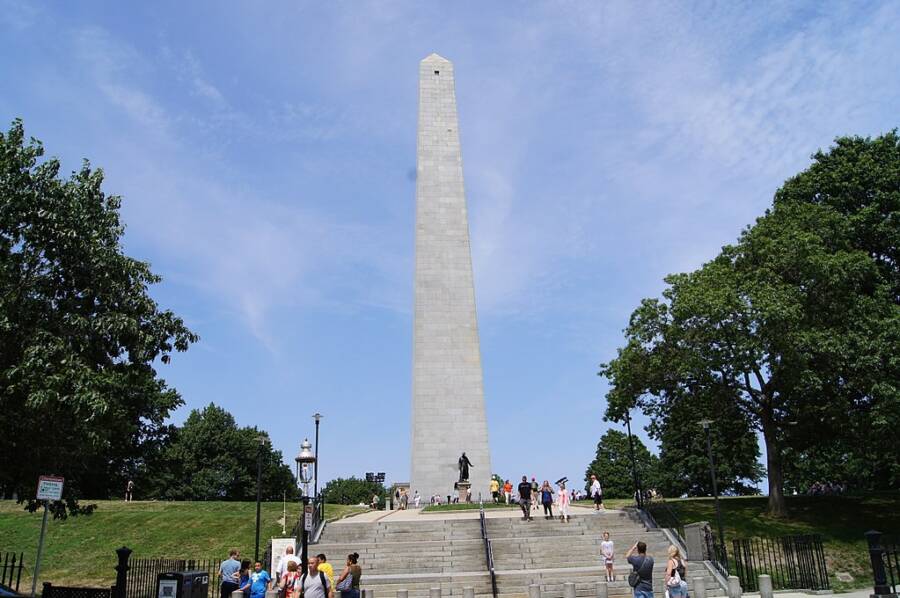
Wikimedia CommonsThe Bunker Hill Monument in Charlestown commemorates this fierce battle that took place at the outset of the Revolutionary War.
These archaeological projects are being conducted by the City of Boston Archaeology Program, with the aim of highlighting the everyday lives of those who have gone underrepresented in the typical narrative of history. Through historical research and archaeological digs, scholars hope to tell the stories of the women, children, disabled residents, enslaved people, and Black and Indigenous people who lived in Charlestown.
In all, researchers are trying to piece together the stories of everyday people. For example, there are handwritten documents made by residents who left Charlestown after the battle that list the possessions they had lost.
“It’s kind of like archeological cheatsheets,” Joe Bagley, head archaeologist of the project, told Boston’s WBUR. “When we dig, we look for stuff, and these are essentially lists of all the things that they lost in the battle when their homes burned.”
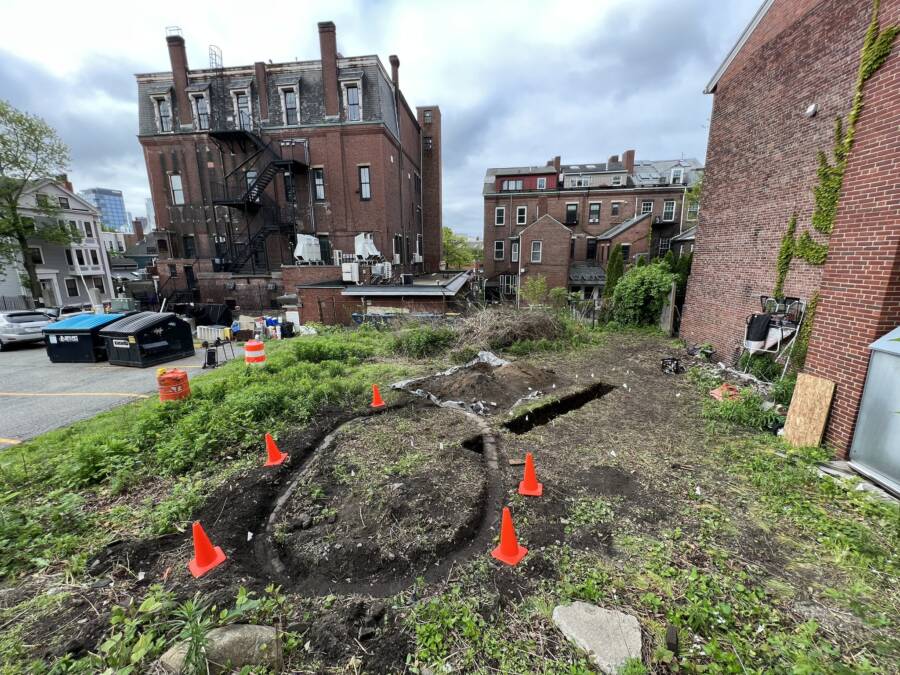
City of Boston Archaeology ProgramExcavations are revealing the little-known stories of the residents of Charlestown whose homes were destroyed.
One of the major finds from these digs was the remains of a tavern that used to serve the residents of Charlestown. Archaeologists have uncovered thousands of pieces of dishes and drinking vessels, as well as parts of the burned building itself.
“We have a tavern site that essentially is Boston’s Pompeii,” Bagley explained. “The townspeople fled. When they came back, they voted to leave their town tavern, the Three Cranes Tavern, undeveloped forever. They pushed all the stuff into the middle of the foundation, and it’s essentially a time capsule of everything that was dropped on that day in 1775.”
Life In Charlestown Before And After The Battle Of Bunker Hill
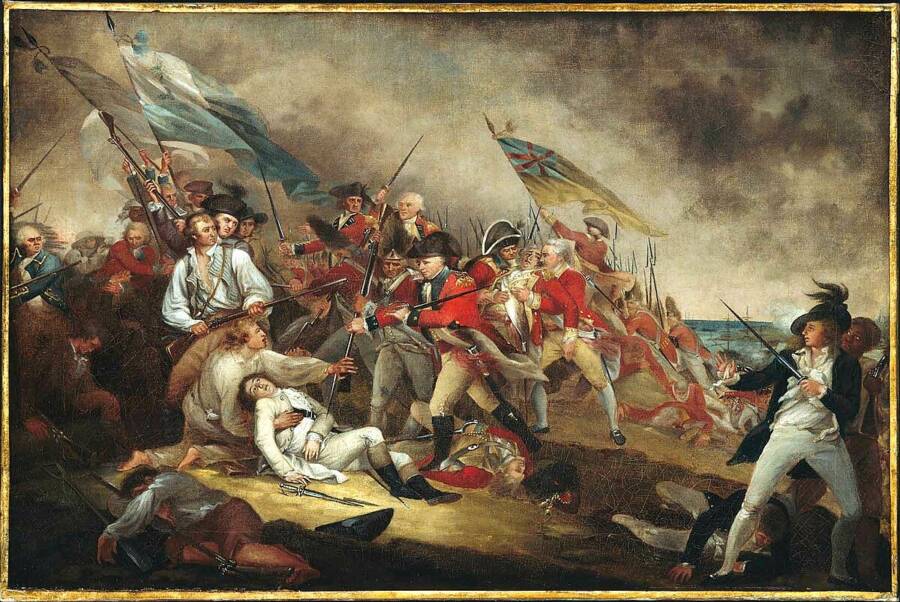
John Trumbull/Wikimedia CommonsJohn Trumbull’s painting, The Death of General Warren at the Battle of Bunker’s Hill, June 17, 1775.
When the British began firing cannonballs at Charlestown on June 17, 1775, many of the residents fled. Some later returned to the town, but many never did, leaving only traces of their former lives behind.
“We had an entire pottery industry in Charlestown,” said Bagley. “After the fire, people lost their kilns, their warehouses, their workshops, and they fled the town because everybody did and essentially went to their families, who were mostly other potters in other towns, and didn’t come back.”
With the help of historical documents, the team was able to put together a map of some of the locations that former residents moved to after the Battle of Bunker Hill. The map contains the locations of about one third of the residents who left Charlestown and submitted a claim for the property they had lost.
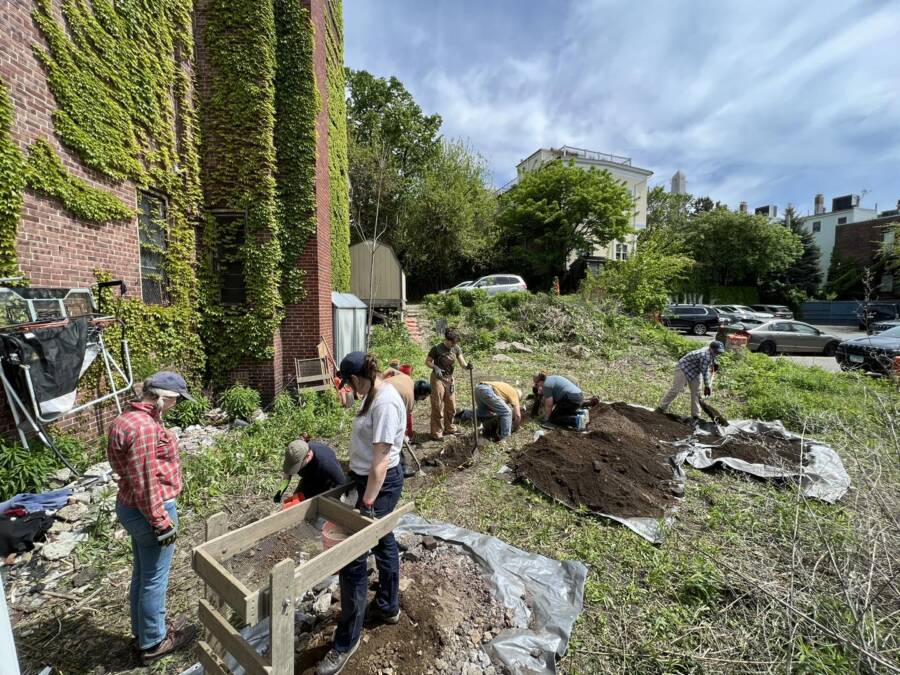
City of Boston Archaeology Program“The battle is something that we kind of glorify today, but also there was this deep loss,” said Boston City Archaeologist Joe Bagley, “this trauma that hundreds and hundreds of people went through on that day.”
The historical data has also allowed the team to create a map of what the neighborhood would’ve looked like before the battle. Meanwhile, the archaeological team reconstructed a 1775 census of Charlestown to gain a better understanding of who was living there at the time of the fires.
Bagley hopes this work will help underline the human toll associated with the Battle of Bunker Hill. He wants to highlight the realities of war and loss for the hundreds of people who were impacted by this widely-glorified event.
“There are stories about everyday people, who were in the town of Charlestown, who saw their lives change in one morning, who ran out their doors and came back to literally nothing,” Bagley said. “And I think that’s really the human story of the impacts of war.”
After reading about how archaeologists are piecing together the history of Charlestown before and after the Battle Of Bunker Hill, discover the forgotten story of William Dawes, the man who rode alongside Paul Revere. Then, learn about the Revolutionary War’s Battle of Cowpens.





